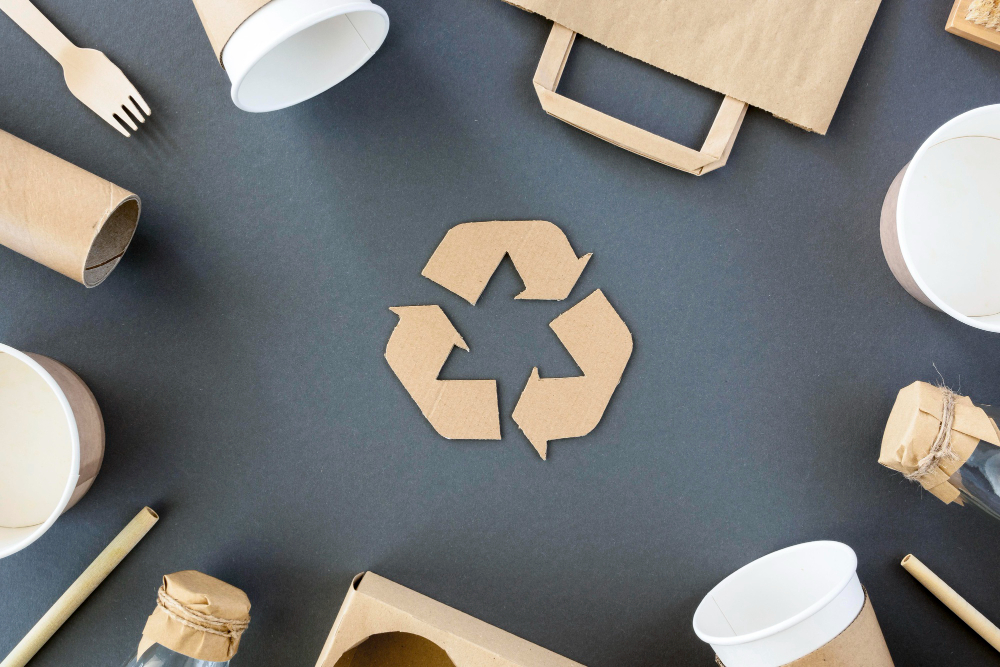In conversations around sustainability, industrial packaging often sits in the shadows. The spotlight typically falls on consumer packaging — bottles, boxes, and retail plastics — while the bulk carriers of global trade remain overlooked. Yet, quietly and steadily, industrial packaging is undergoing one of the most significant transformations in its history.
Driven by advances in polymer science, recycling infrastructure, and masterbatch engineering, woven polypropylene (PP) and HDPE sacks are beginning to close the loop between production, performance, and planet. The shift is subtle but powerful. What was once linear — make, use, discard — is becoming circular, efficient, and resilient.
The Myth That Recycled Means Weak
For years, reprocessed plastic carried a stigma: recycled meant low quality, brittle, or unreliable. In industrial packaging, where every bag must withstand tonnes of pressure, that perception ran deep. But recent material science developments are rewriting this belief.
Modern reprocessed PP and HDPE granules now achieve strength levels remarkably close to virgin material. Controlled extrusion techniques, multi-stage filtration, and advanced blending have improved consistency and tensile strength. Reprocess bags can endure the same mechanical stress and stacking loads, often at a fraction of the carbon footprint.
In practice, this means a cement or fertilizer manufacturer can adopt reprocessed woven sacks without compromising safety or shelf life — a balance that was almost impossible a decade ago. The performance gap between virgin and recycled materials is no longer a chasm; it is a measurable margin of engineering.
Mapping the Lifecycle of a Woven Sack
To understand how far sustainability has progressed, one must trace the journey of a woven sack. It begins with polymer resin, typically polypropylene. The granules are extruded into tapes, woven into fabric, cut, printed, and stitched. The sack is filled, transported, emptied — and that is where the real opportunity begins.
In a circular system, post-use sacks are collected, shredded, washed, and granulated back into resin pellets. These pellets re-enter the extrusion line to become new sacks, often with improved fillers and stabilizers that preserve structural integrity.
This closed loop reduces the dependency on virgin polymer while cutting landfill waste and emissions. The process is not only environmentally sound but also operationally efficient. Each reprocessing cycle teaches the manufacturer more about polymer behavior, contamination control, and additive compatibility. Sustainability becomes an iterative form of R&D.
The Masterbatch Revolution in Circular Design
Behind every durable and visually consistent reprocess bag lies a quiet revolution in masterbatch technology. Fillers, colorants, and stabilizers play an essential role in how recycled material behaves under heat and stress.
Modern filler masterbatches enhance stiffness, opacity, and print adhesion without adding unnecessary weight. Color masterbatches, once difficult to match in recycled blends, now use advanced dispersion techniques to ensure uniform tone and brightness. UV stabilizers extend outdoor lifespan, making reprocess bags suitable even for agriculture and construction sectors.
This innovation ensures that recycled does not mean irregular. It means intelligently engineered — optimized for both performance and circularity. The masterbatch becomes the genetic code of sustainability, determining how the material lives, performs, and returns to the cycle.
Sustainability as a Cost Advantage by 2030
Until recently, sustainability was treated as a premium — a moral choice that added cost. That assumption is rapidly collapsing. Rising crude prices, regulatory incentives, and consumer scrutiny are making recycled materials the smarter economic option.
By 2030, industrial packaging made with reprocessed polymers will likely offer a measurable cost advantage. Lower input costs, reduced energy use, and eligibility for green certifications will directly impact bottom lines. Moreover, global buyers are beginning to factor in sustainability scores when evaluating suppliers. For manufacturers, circular packaging is no longer an environmental gesture; it is a competitive differentiator.
A Future That Feels Different
The sustainability revolution in industrial packaging does not shout. It hums quietly in extrusion plants, in research labs, and in the hands of engineers rethinking what a “used” bag can become. The future of woven sacks is not just about being strong; it is about being smart, regenerative, and ready for a world where circularity is the new efficiency.
The Takeaway
Eco-conscious does not mean fragile. It means forward-looking and future-proof. In industrial packaging, the quietest revolutions are often the most durable ones.
